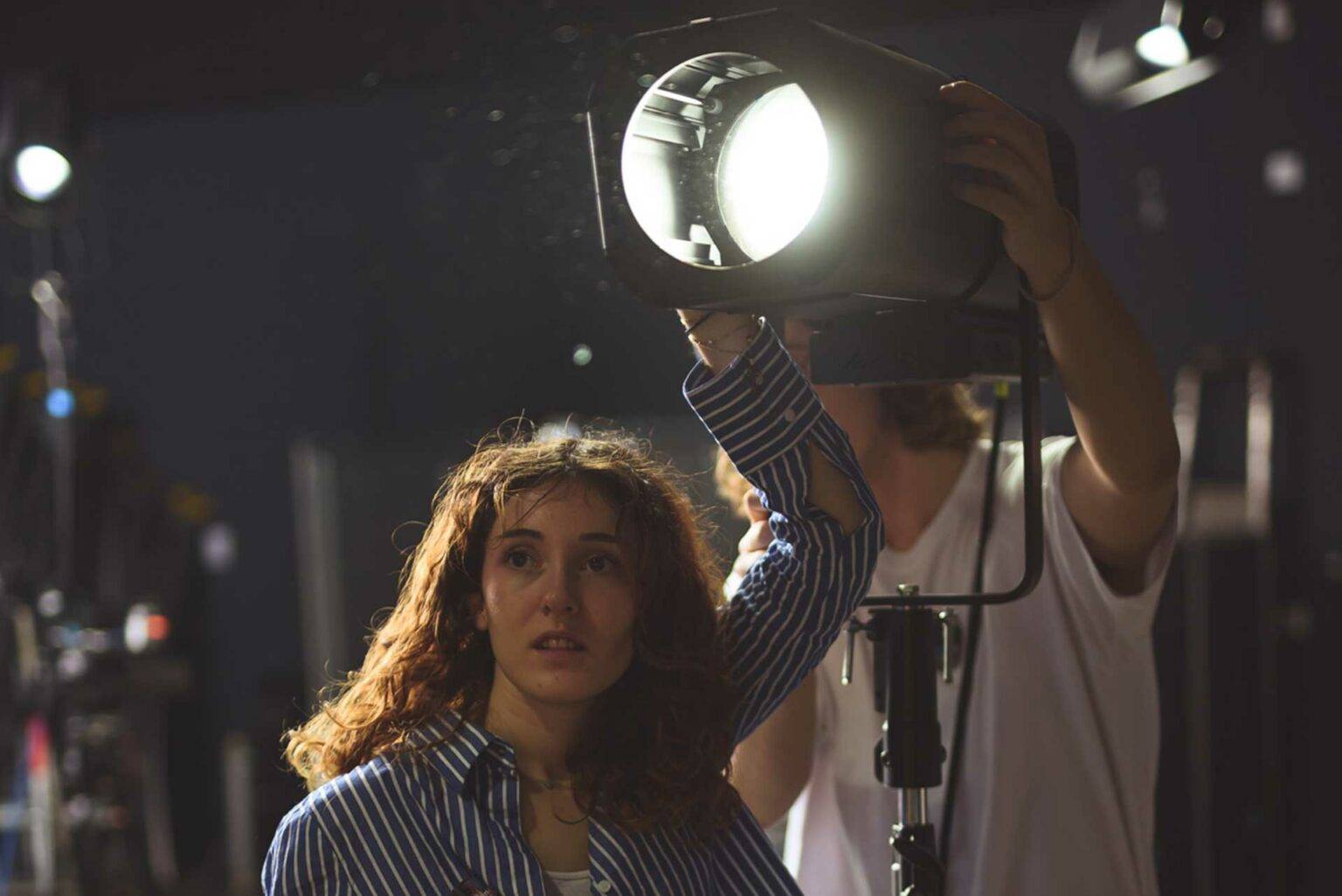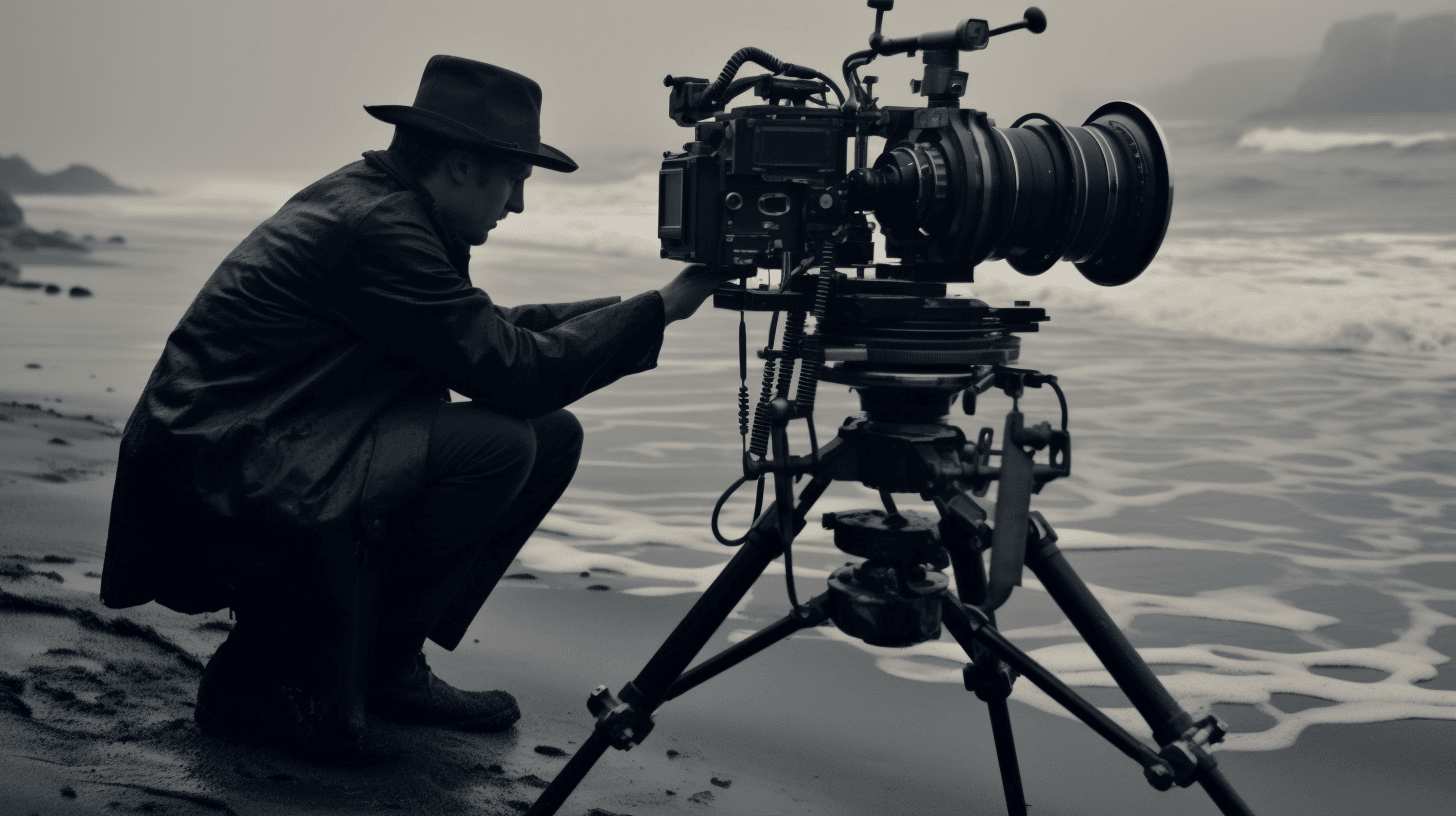The Evolution of Cinema: A Comprehensive Overview
The Birth of Motion Pictures
The journey of cinema is as ancient as human storytelling itself. From shadow plays in early civilizations to the silent films of the early 20th century, cinema has evolved into a powerful medium capable of conveying stories, emotions, and social commentary across borders and generations.
The origins of motion pictures can be traced back to the 19th century when inventors began exploring ways to capture and display images in rapid succession. Joseph Plateau's phenakistoscope (1832) and Louis Daguerre's heliochromy (1839) laid the groundwork for the development of the motion picture.
The Lumière Brothers and Early Screenings
In 1895, the Lumière brothers, Auguste and Louis, demonstrated their Cinématographe in Paris. This device combined features of a film camera, projectors, and develop machines into a portable system, marking the birth of practical motion picture technology. Their first public screening in December was a watershed moment in cinematic history, showcasing short films with titles such as "Arrival of a Train at La Ciotat" and "The Sprinkler Sprinkled."
The Emergence of Narrative
Following the groundbreaking work of the Lumière brothers, narrative storytelling began to take shape. French director Georges Méliès, known for his innovative special effects and fantastical tales, produced "A Trip to the Moon" (1902). This film marked a significant leap in cinematic expression, utilizing stop-motion techniques and imaginative special effects to transport audiences to the moon.
The Silent Era: Pioneers and Techniques
The era of silent films, spanning roughly from 1895 to the mid-1920s, set the stage for the development of modern cinema. During this period, filmmakers relied on intertitles and musical accompaniment to convey narratives and emotions without the aid of spoken dialogue.
Artistic Innovations and Cultural Impact
Filmmakers like D.W. Griffith revolutionized storytelling with complex narrative structures and innovations in editing and lighting. His film "The Birth of a Nation" (1915), though controversial due to its portrayal of the Ku Klux Klan, showcased advancements in cinematography, acting, and narrative complexity.
The rise of influential figures such as Charlie Chaplin and Buster Keaton introduced the world to iconic comedic characters that transcended language barriers, becoming beloved worldwide. Chaplin's films, such as "The Kid" and "City Lights," explored themes of poverty and humanity with warmth and wit.
Technological Advancements
The technological evolution during the silent era included improvements in film stock, editing equipment, and projection systems. The introduction of Technicolor in the late 1910s brought vibrant colors to black-and-white films, enhancing visual appeal and emotional impact.
In addition to color, the silent era saw the development of more sophisticated sound systems through mechanical devices. The invention of the Audion tube in 1906 paved the way for better audio playback in theaters, though it took several decades before synchronized sound became standard.
The Transition to Talkies
The transition from silent films to talkies occurred in the early 1920s, marked by the debut of "Don Juan" (1926). However, the true breakthrough came with Warner Bros.' "The Jazz Singer" (1927), which featured both synchronized dialogue and music, effectively launching the "talkie" or "sound film" era.
This transition was not without challenges. Initially, many filmmakers were resistant to adopting new technologies, and audiences were slow to embrace the change. The transition demanded significant investment in new equipment and studio infrastructure.
The arrival of synchronized dialogue brought a flood of new possibilities for storytelling, allowing for direct communication between characters and providing a more immediate connection with audiences. Notable debuts from Hollywood, such as "King Kong" (1933) and "Gone with the Wind" (1939), capitalized on the newfound ability to convey complex narratives with realistic dialogue.
Social and Economic Impacts of Early Cinema
Cinema's rapid adoption and expansion during the early years had profound social and economic impacts. Urbanization and the rise of movie theaters as social hubs created a new mass media landscape. By the 1920s, millions of people flocked to cinemas weekly, transforming the entertainment industry and urban culture.
Cinema provided escapism and offered a shared cultural experience, fostering community and promoting a sense of collective identity. Film festivals and premieres emerged as important cultural events, bringing people together and contributing to the growth of the film industry.
Economically, the rise of cinema led to the creation of new industries, including cinematographic equipment manufacturing, film production studios, and theater owners. Employment opportunities increased, leading to a booming economy centered around the burgeoning entertainment sector.
The success of early cinema also paved the way for the establishment of film schools and training programs, ensuring the continuous supply of talented individuals committed to advancing the art of filmmaking.
In conclusion, the early history of cinema was characterized by rapid innovation, artistic experimentation, and societal impact. From the silent era to the dawn of talkies, cinema has grown into a global phenomenon, shaping cultures and narratives worldwide. As we move forward, understanding this rich history becomes crucial to appreciating the diverse forms and expressions that make cinema a truly universal art form.
The Golden Age of Hollywood: Dominance and Diversity
With the advent of talkies, Hollywood emerged as the undisputed center of film production globally. The late 1920s and early 1930s saw a period known as the Great Depression, and cinema served as a vital source of escapist entertainment. Studios leveraged this time to produce classics that would stand the test of time, cementing Hollywood's status as a cultural and industrial powerhouse.
Social Issues and Genre Expansions
The 1930s and 1940s witnessed a surge in socially conscious cinema. Filmmakers used the medium to address critical issues of the day, such as racism, inequality, and class struggle. Films like "Grapes of Wrath" (1940) and "Native Son" (1951) tackled themes of socio-economic disparity, challenging societal norms and fostering empathy among viewers. During World War II, Hollywood produced propaganda films and documentaries to support the war effort, further emphasizing the industry's role in shaping public opinion and morale.
The genre explosion in the 1930s brought about new forms of storytelling. The western genre, epitomized by directors like John Ford, captured the American ethos of individualism and the frontier spirit. Films such as "Stagecoach" (1939) and "Red River" (1948) defined the genre and remain classics today. Crime dramas and gangster films, exemplified by films like "Little Caesar" (1931) and "Public Enemy" (1931), highlighted the gritty realities of urban life and criminality.
Horror and fantasy genres also flourished, with works like "Frankenstein" (1931) and "Dracula" (1931) captivating audiences. These films, often shot in black-and-white and featuring elaborate makeup and costumes, set the stage for future monsters and villains.
Technological Innovations
Technological advancements continued to transform the art of filmmaking. The 1920s saw the development of sound synchronization, while the 1930s brought innovations like the three-strip Technicolor process. This breakthrough allowed filmmakers to capture stunning visuals, enriching storytelling in ways previously unimaginable. Directors like Douglas Fairbanks Jr. and Alfred Hitchcock capitalized on these advancements to create visually stunning masterpieces.
The introduction of widescreen formats, such as Cinerama and Cinemascope, in the late 1950s expanded the visual canvas, providing immersive and spectacular viewing experiences. "This Is Cinerama" (1952) and "The Robe" (1953) showcased the potential of these new technologies, attracting massive audiences and revitalizing the cinema industry.
The Postwar Period: International Cinema and New Directives
The post-World War II era marked a significant shift in global cinema. European filmmakers, particularly the Italian neorealists, introduced a new style of documentary-like storytelling that focused on the reality of war-torn societies. Directors like Vittorio De Sica and Roberto Rossellini made films like "Bicycle Thieves" (1948) and "Rome, Open City" (1945) that offered a stark contrast to the escapist offerings of Hollywood.
France saw the emergence of the Nouvelle Vague (New Wave) movement, led by filmmakers like Jean-Luc Godard and François Truffaut. Films such as "Breathless" (1960) and "Jules and Jim" (1962) broke away from traditional storytelling techniques, embracing improvisation and innovative editing. The New Wave filmmakers championed creative freedom and challenged the conventional norms of cinema.
Globalization and Distribution
The mid-20th century witnessed a significant increase in international distribution and cross-cultural exchanges. Hollywood films reached a wider audience, influencing global popular culture. At the same time, non-Western films began to gain recognition and respect abroad. Directors like Satyajit Ray in India, Akira Kurosawa in Japan, and Luis Buñuel in Spain brought unique perspectives and storytelling methods to the international stage.
Vernon Road and Columbia Pictures, among other Hollywood studios, established foreign-language film divisions, aiming to distribute and market European and Asian cinema to a broader audience. This globalization not only expanded the horizons of film lovers but also enriched the cultural diversity of cinema. Festivals like Cannes, Berlin, and Venice provided platforms for these films, fostering a global dialogue on cinema.
Technological Breakthroughs: TV and Special Effects
The late 20th century saw transformative changes in how films were produced, distributed, and consumed. The advent of television presented both opportunities and challenges for the film industry. On one hand, television broadened the reach of storytelling, but it also competed with movie theaters for audience attention.
The 1960s and 1970s witnessed a surge in technological advancements in film production. Color films became the standard, and the use of high-definition cameras improved image quality significantly. Additionally, the rise of the 70mm format offered enhanced resolution and depth, as seen in films like "2001: A Space Odyssey" (1968) and "Close Encounters of the Third Kind" (1977).
The development of computer-generated imagery (CGI) in the 1980s and 1990s revolutionized special effects. Innovations like those seen in "Tron" (1982) paved the way for films like "Jurassic Park" (1993), which utilized groundbreaking CGI to bring dinosaurs to life. These advancements not only enhanced visual spectacle but also expanded the boundaries of narrative possibilities.
The Digital Revolution: Streaming Services and Global Reach
The turn of the millennium marked the digital revolution, transforming the film industry in myriad ways. The rise of digital cinematography, editing software, and post-production tools dramatically altered the filmmaking process. Digital cameras allowed filmmakers to shoot in high definition, reducing costs and increasing flexibility. The introduction of digital intermediate processes facilitated faster turnaround times and greater creative control over final product quality.
Streaming services like Netflix and Amazon Prime entered the scene in the mid-2010s, offering a new model for distribution and consumption. These platforms leveraged vast libraries of content and recommendation algorithms, appealing to niche audiences and democratizing access to film, regardless of geographic location. Films released directly to streaming services have become increasingly common, bypassing traditional theatrical windows altogether.
The global reach of streaming services has also facilitated the sharing of diverse stories from around the world. Indigenous and minority filmmakers have gained platforms to showcase their work, fostering a more inclusive and representative film industry. Movies like "Parasite" (2019), directed by Bong Joon-ho, won Academy Awards and brought international cinema to a wider audience, highlighting the growing importance of global perspectives in filmmaking.
Conclusion
The history of cinema is a narrative of constant innovation, adaptation, and evolution. From the humble beginnings of early motion pictures to the digital revolution of streaming services, each era has contributed uniquely to the art form. Today, cinema continues to thrive as a medium for storytelling, reflecting the complexities and aspirations of humanity.
As we look towards the future, it is clear that cinema will continue to grow and adapt to new technologies, societal changes, and cultural dynamics. The legacy of early pioneers and the enduring influence of classic works ensure that cinema remains a powerful and timeless medium, capable of uniting and inspiring audiences worldwide.
Modern Challenges and Future Horizons
As cinema enters the 21st century, the industry faces numerous challenges and opportunities. Streaming services have dramatically altered the distribution landscape, presenting both advantages and drawbacks. On one hand, these platforms offer unprecedented access to diverse content and a global audience. On the other hand, they challenge traditional models of movie theater attendance and revenue generation.
The rise of independent cinema has also been significant, thanks to crowdfunding and digital distribution platforms. Filmmakers can now reach audiences directly, sidestepping major studios entirely. Independent films often receive critical acclaim for their artistic merit and unconventional storytelling, often winning awards and gaining traction outside mainstream channels.
Environmental Considerations and Sustainability
The environmental impact of cinema and film production is increasingly in focus. The production of large-scale productions, along with the energy consumption of movie theaters and streaming services, contribute to carbon footprints that cannot be ignored. Studios and film organizations are beginning to explore sustainable practices, from using green energy on set to recycling materials and reducing waste.
The industry has started to adopt eco-friendly technologies and practices. For example, shooting on location in a responsible manner, ensuring proper disposal of set materials, and using renewable energy whenever possible. Initiatives like the Greenpeace-backed Screen Sector Climate Pledge encourage the film industry to reduce its carbon emissions and become more environmentally sustainable.
The Impact of Globalization
Globalization continues to reshape cinema, with audiences hungry for diverse storytelling from all corners of the globe. The success of films like "Coco" (2017) and "Joker" (2019) demonstrates the power of universal themes and compelling narratives that resonate across cultures. As filmmakers from different backgrounds gain recognition, there is a growing emphasis on diversity and inclusivity.
Multicultural films and collaborations between international teams are becoming more common. Films like "Black Panther" (2018) and "Parasite" (2019) have shattered box office records and critical acclaim, highlighting the global appeal of stories and characters from underrepresented communities. The Oscars and other major award shows now actively seek to promote global cinema, recognizing excellence beyond Western-centric narratives.
Technology and Audience Engagement
The rapid advancement of technology continues to transform the way films are made and consumed. Virtual reality (VR) and augmented reality (AR) present new avenues for immersive storytelling. Platforms like VRChat allow users to virtually attend immersive movie experiences, blurring the line between film and interactive media. This opens up possibilities for entirely new forms of narrative engagement, from interactive documentaries to full-fledged VR films.
In addition, virtual sets and digital doubles in CGI continue to enhance visual effects. Advanced AI and machine learning are improving post-production processes, from color grading to sound design. These technologies enable filmmakers to push creative boundaries and achieve previously unattainable visual and auditory effects, making cinema more spectacular than ever.
Future Trends and Predictions
Predicting the future of cinema is inherently speculative, but current trends suggest that the industry will continue to evolve rapidly. The integration of artificial intelligence and blockchain technology may provide new methods for distribution and revenue tracking, potentially disrupting traditional business models.
Augmented and virtual reality experiences will likely play a larger role, allowing audiences to participate more deeply in films. Mixed reality environments could become commonplace, providing a seamless blend of real and digital spaces. This could lead to entirely new forms of storytelling where viewers are active participants rather than passive observers.
The rise of micro-budget and independent filmmaking is unlikely to diminish, as technological advances make it easier for aspiring filmmakers to create professional-grade films with limited resources. Social media and online platforms will continue to be powerful tools for marketing, distribution, and engagement with audiences.
Conclusion
The evolution of cinema over the past century has been nothing short of remarkable. From the earliest motion pictures to the latest streaming services and immersive technologies, cinema remains a dynamic and ever-changing medium. As it continues to face new challenges and embrace new opportunities, it will undoubtedly continue to shape and reflect the cultural and social landscapes of our world.
At its core, cinema remains a powerful tool for storytelling, emotion, and cultural exchange. Whether through big-budget blockbusters or small, independent films, the medium continues to captivate and inspire audiences around the globe. As we look ahead, the future of cinema promises to be as exciting and innovative as its rich and storied past.
The journey of cinema is far from over. It will continue to evolve, adapting to new technologies and social changes. But one thing remains certain—cinema will always remain a beacon of human creativity, a vessel for emotion, and a shared space where the world comes together to imagine, dream, and experience.























Comments